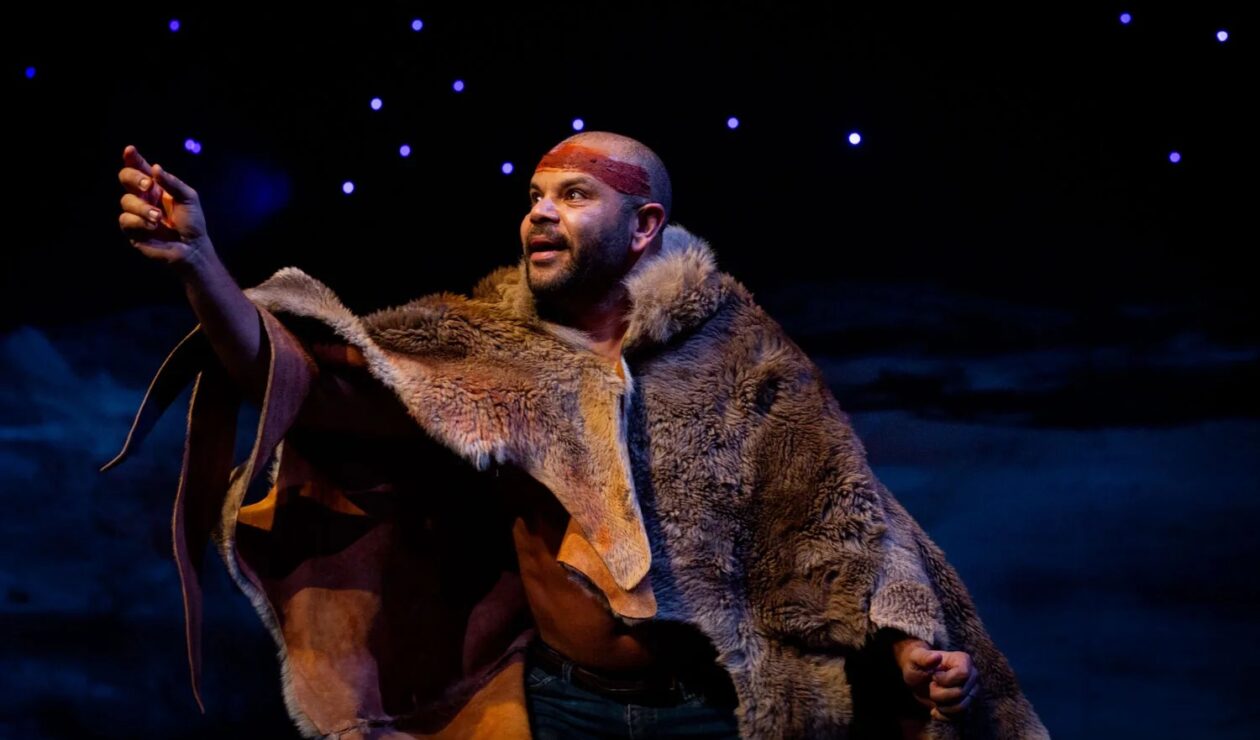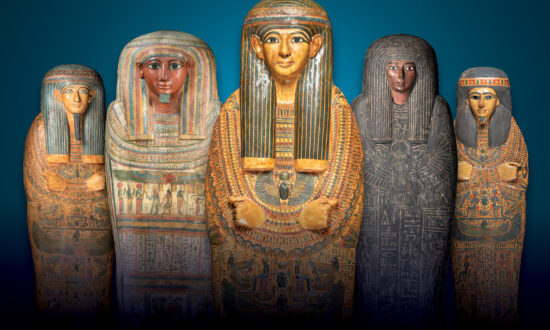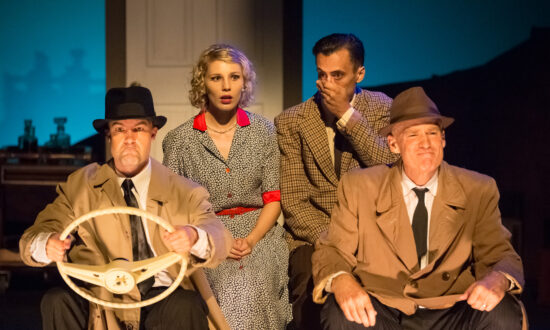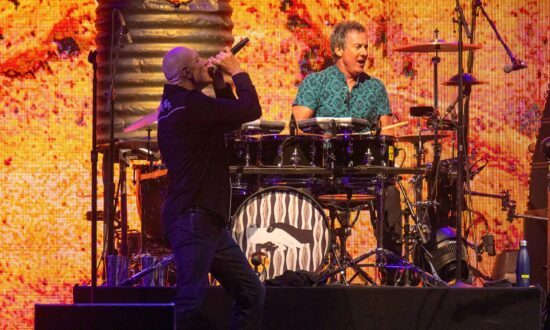At What Cost? is the latest, and also likely the bravest and boldest, outing from the creative partnership of Nathan Maynard (Trawlwoolway/Pakana writer and associate director) and Isaac Drandic (Noongar director). Produced by Belvoir Street Theatre, it comes to Adelaide stages courtesy of the State Theatre Company South Australia.
The story centres around proud Palawa man Boyd (played by Wiradjuri actor Luke Carroll), who is fighting for Native Title Rights on his ancestral home of Putalina in Lutruwita, otherwise known as Oyster Cove in Tasmania. His wife Nala (played by Dunghutti, Gumbaynggirr and Bundjalung woman Sandy Greenwood) informs Boyd the repatriation of William Lanne’s remains, which were stolen 150 years ago, was successful. Now, Boyd is responsible for sending William home to his ancestors in the sky-world by building the funeral pyre.
As he sets about this important task, the arrival of a woman called Gracie (Alex Malone) brings tension and confusion to Boyd’s family, especially for the recently returned Daniel, Boyd’s so-called “city-slicker” cousin (Ari Maza Long).
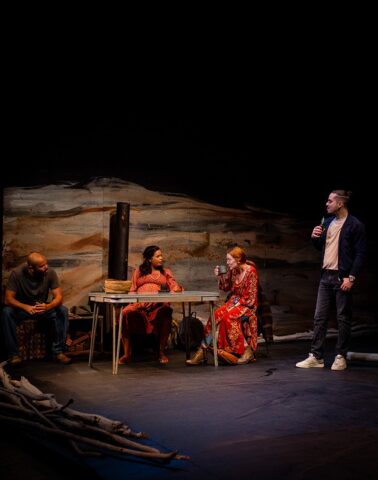
Luke Carroll, Sandy Greenwood, Alex Malone and Ari Maza Long perform on Jaconb Nash’s set for At What Cost?
Walking into the Odeon Theatre, I immediately felt at home with the large surrealist swathes of brown and white ochre marking the subtly mirrored back walls. The large gum tree branches that line the stage, from which Boyd slowly builds the pyre, do a lot to channel the ambience of being on Country. It’s a show that would be incredibly effective if staged outside, but even so, First Nations crew Jacob Nash and Chloe Ogilvie do a stellar job in recreating the energy and emotions of being on Country and under the stars through their set and lighting design, respectively.
As the show began to unfold, it became clear that it was delicately and perfectly weighted. To be able to touch on such loaded ideas – from the dense and unsettling real history of William Lanne’s stolen remains to the ins and outs of Land Council operations – all whilst avoiding the pedagoguery pitfalls that can come with such heavy political plays, was pure alchemical gold. The performances by all, but particularly the inimitably powerful Luke Carroll, truly gave justice to the thoughts explored.
In bringing audiences inside these complex issues, this production shows that colonisation is still being fought today in myriad ways and the battle’s not getting any easier as it becomes more and more nuanced. As the story evolves, it starts to snag on one particularly knotty nuance – that of how claims on First Nations identity are made. The show’s exploration lays bare how the infinite delineations within identity politics creates a space where enemies can masquerade as allies, and even well-intentioned allies can be dangerously misinformed when it comes to cultural practices.
Regarding this problem, an elder once said to me, “There are blackfullas playing the whitefullas game and there are whitefullas pretending to be blackfullas”. That was seven years ago. Alas, it is even more true now.
Sitting in the theatre watching Maynard’s exploration of this particular complexity, I felt the ways the fluidity of personal identity have combined with enforced government guidelines, whether too lax or too strict, and left a thousand shades of grey that the “box tickers” (as they’re referred to in the play) can take advantage of. It swings both ways, of course. I remember being rejected by an Anglo-Saxon Christian organisation for a NAIDOC week performance for “not looking Aboriginal enough”.
People who are not of the creed and culture deciding who is and isn’t mob is a slippery slope we’ve been riding for a while. But that one example particularly hurt, especially after spending my whole life having my various bloodlines and cultural heritage affirmed by my family on both sides. I mean, the only reason I was baptised into the Port Adelaide Power sect of football worship is because my Nanna Bonney used to always tell me, “Gavin Wanganeen’s your second cousin, we gotta go for him!”.
By unpacking the importance of these subjects through the ancient truth-telling form of theatre, At What Cost? plays a pivotal role in being a potent springboard for many difficult, but much-needed discussions around these ideas.

At What Cost? is a springboard for much needed discussions. Photo: Jessica Zeng
Opening night ended in a long and raucous standing ovation. The discussions in the foyer afterwards affirmed that everyone agreed this show will sit in our bones for a long time.
I know it rattled and soothed my Nharangga and Saxon bones. The soothing was a result of the sincere and passionate display of culture and language by an incredible First Nations cast. The rattling came from the portrayal of the inevitable outside powers that threaten to divide First Nations families and communities to this day. These facets of the play in particular resonated extremely deeply with me, as they should with us all, because they are our contemporary story. I implore you Adelaide, see this deadly piece of theatre while you still can.

Get InReview in your inbox – free each Saturday. Local arts and culture – covered.
Thanks for signing up to the InReview newsletter.
At What Cost? is playing at the Odeon Theatre until July 1. It is presented by State Theatre Company South Australia.
Kyron Weetra is a proud Nharangga/Saxon clan man. He is one of the first recipients of the Arts SA and InReview First Nations Arts Writing Mentorship. Kyron is working with experienced writer, visual artist and curator Troy-Anthony Baylis – who is a descendant of the Jawoyn people from the Northern Territory and is also of Irish ancestry – to write a series of articles for publication in InReview.
Kyron was also recently named Artist in Residence at State Theatre Company South Australia.
Support local arts journalism
Your support will help us continue the important work of InReview in publishing free professional journalism that celebrates, interrogates and amplifies arts and culture in South Australia.
Donate Here
